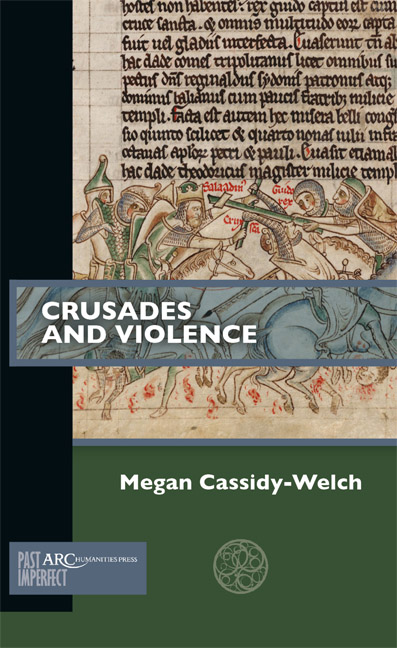Chapter 3 - Memories, Emotions, and Aftermaths of Violence
Published online by Cambridge University Press: 13 February 2024
Summary
The aim of this book has been to explore medieval understandings of crusade violence and consider some of the contexts in which violence was justified or condemned. We have seen how violence emerged from a range of contexts, was expressed in diverse vocabularies communicated in text, preaching, song, and was played out in material and imagined settings. I have tried to illustrate how crusading violence was rhetorical and performative but also real and experienced. My focus so far has been on crusaders themselves and the environments which informed their thinking and action. In this chapter, I want to shift this focus to consider how violence was remembered during and after the crusades. I’m focussing here on the emotional dimensions of memory, the performance of memory in medieval crusade culture, and contemporary (i.e., post-medieval) memories of crusade violence.
Understanding how violence is remembered is a crucial aspect of understanding violence itself, given that violence attaches itself to memory in all sorts of ways. Many modern studies of war have shown that victims of war may experience the disruption of memory, the inability to relegate a violent event to the past, the constant intrusion of memories of violence into present consciousness. In modern medical discourse, this is “trauma”—a constant replaying of a violent experience that prevents that event from being psychologically consigned to “the past.” Memory of violence may also be more positively marshalled into the service of testimony and witnessing. Again, the many modern studies of the aftermath of events marked by atrocity such as the Holocaust, the apartheid era in South Africa, the genocides in Rwanda and Cambodia, among many others, have shown how bringing to light memories of experienced violence is necessary for prosecutions or truth and reconciliation processes, and also for historicization—the testimonial and ethical work of “never forgetting” in order to build a different future.
At the same time, we know that remembering violence might also be actively celebrated in cultural memory, becoming part of how groups imagine their collective identities and shape national stories. Sometimes this kind of work of memory is ritualized and performed (remembrance services, veterans’ days) and sometimes it is materialized (monuments and memorials).
- Type
- Chapter
- Information
- Crusades and Violence , pp. 69 - 90Publisher: Amsterdam University PressPrint publication year: 2023



